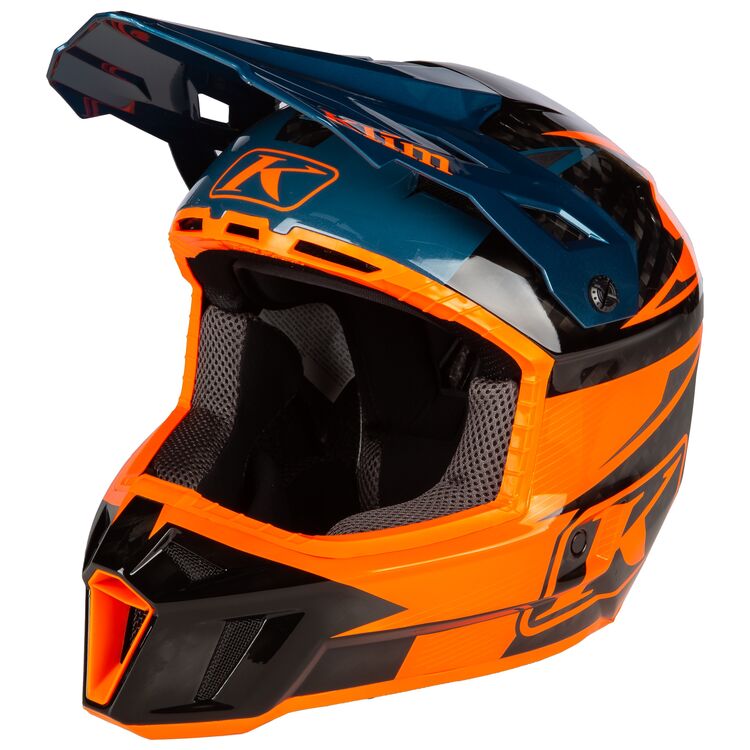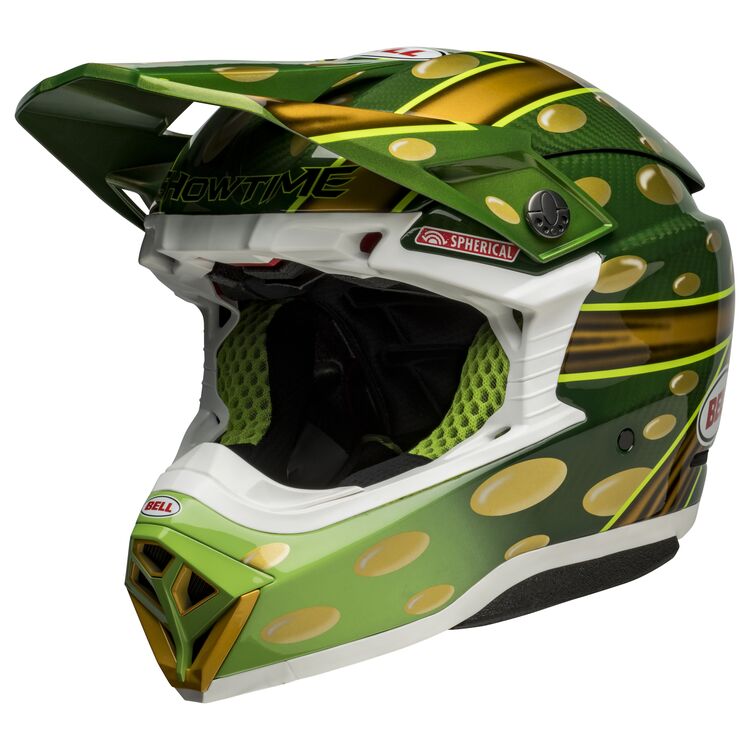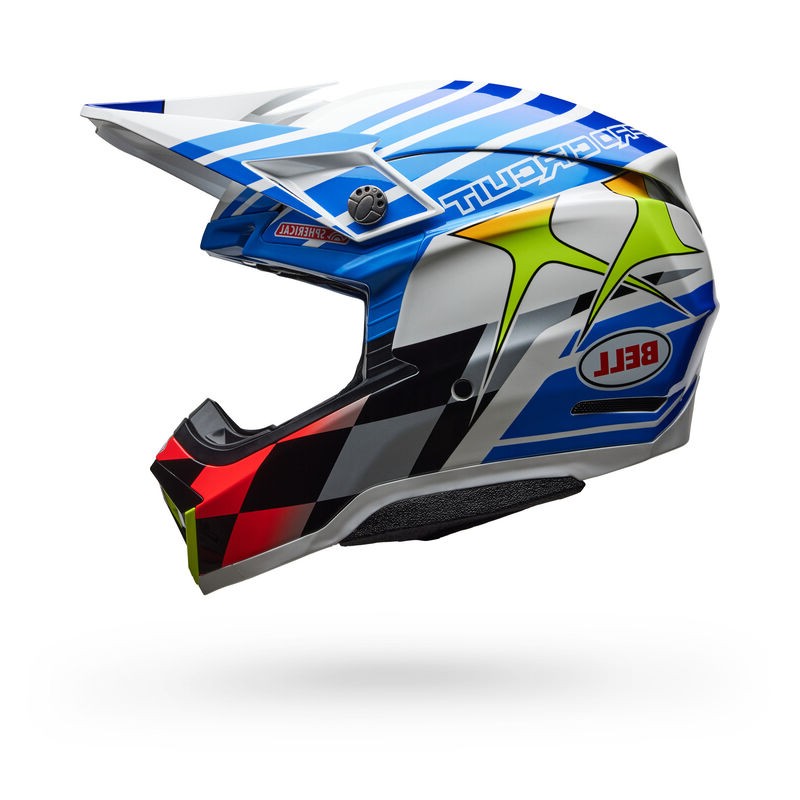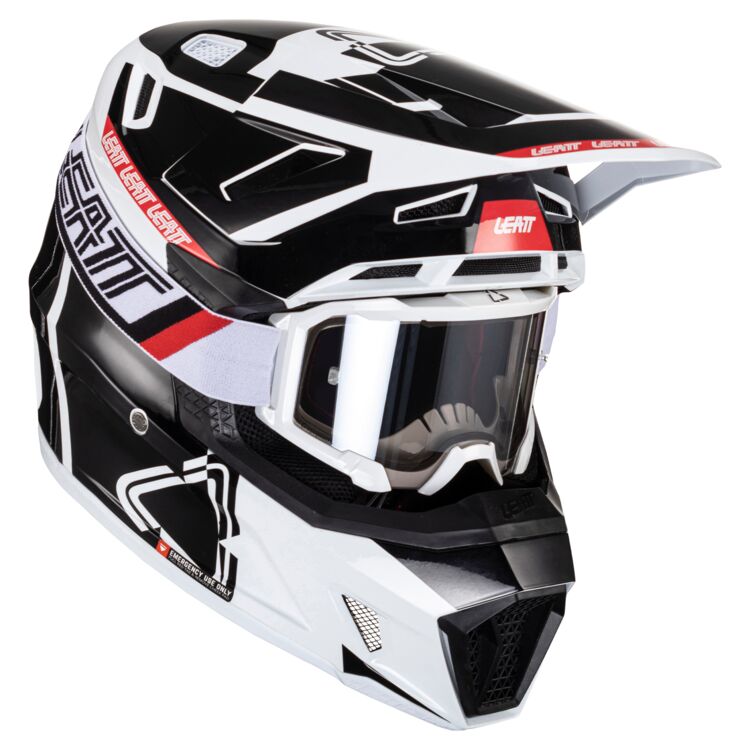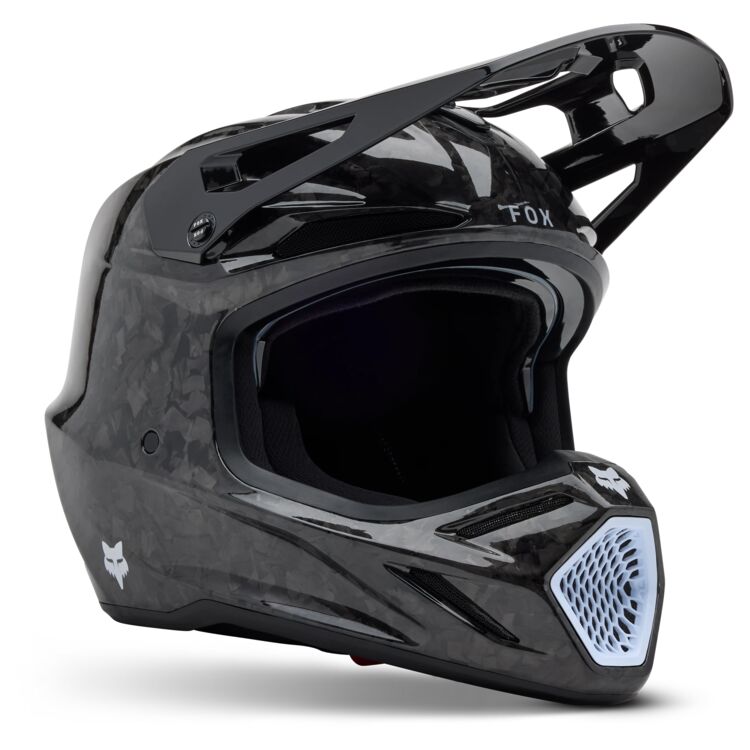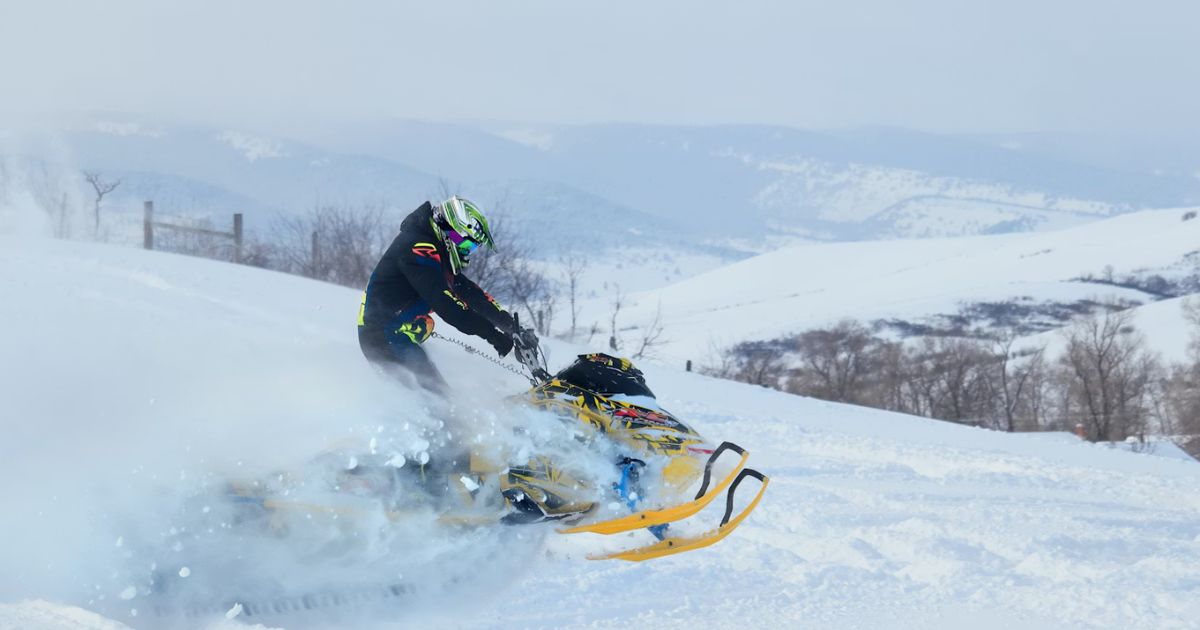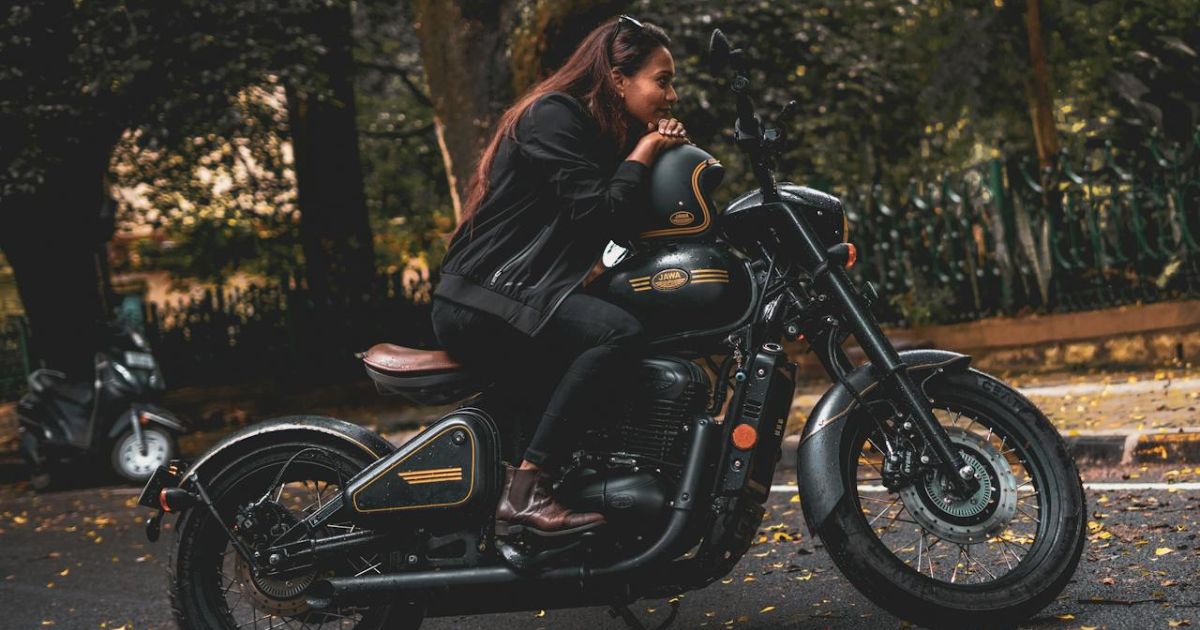
Best Enduro Helmets for Trail Abuse, Tested
left for contents
The wrong helmet can wreck a ride. You know the feeling… everything’s flowing, then your lid turns into a sweatbox, your goggles fog up, and suddenly every line feels twice as hard.
Enduro already beats you up enough. Your helmet shouldn’t make it worse.
This isn’t cruising around the neighborhood. It’s slower, hotter, more brutal in all the weird little ways that only enduro riders get. You need a lid that’s light, breathes well at low speeds, and actually stays put when the trail gets sketchy. Here’s what delivers.
Forget digging through a sea of adventure lids that fall short when the trail gets tight and technical. This guide focuses on helmets built for enduro: lightweight, well-ventilated, and ready to take a hit when it counts. By the end, you’ll know which ones actually help you stay cool, protected, and locked in from the first sketchy climb to the last brutal check-in.

Now, let’s kick over some TL:DR truths you won’t always hear when bench racing about gear:
- That light helmet feels amazing in the shop, sure. But if its ability to manage rotational forces (you know, the head-twisting kind of impacts common in off-road spills) isn’t top-tier, it’s potentially failing you where it counts most for enduro crashes.
- Simply counting vents is pointless. If those vents clog with mud the first time you drop it, or if they’re only designed to work at motocross track speeds (not technical singletrack pace), they aren’t doing you much good when you’re gasping for air on a tough climb.
- Thinking any flashy MX helmet is perfect for tight woods enduro is a recipe for overheating and losing concentration fast. Enduro demands different, often more, ventilation than pure MX.
- Replacing your helmet after a serious crash might hurt your wallet, but it’s a must. Once the EPS foam is compromised, it won’t absorb impact the way it’s designed to, and that puts you at real risk. Some high end helmets are rebuildable, however.
Ready to find the right protection that can keep up with your enduro addiction? Let’s get dirty.
The ATR-3 stands out with its ODS impact protection, lightweight build, and excellent ventilation. NOTE: This helmet is popular and often out of stock: so check all the colorways. | The Klim F3 Carbon Pro Helmet delivers ultralight strength, cutting-edge impact protection, and all-day comfort for serious riders. | The Bell Moto-10 Spherical combines advanced safety (independent inner shell) with exceptional comfort and cooling for serious off-road riders. |
The ATR-3 stands out with its ODS impact protection, lightweight build, and excellent ventilation. NOTE: This helmet is popular and often out of stock: so check all the colorways.
The Klim F3 Carbon Pro Helmet delivers ultralight strength, cutting-edge impact protection, and all-day comfort for serious riders.
The Bell Moto-10 Spherical combines advanced safety (independent inner shell) with exceptional comfort and cooling for serious off-road riders.
Enduro Helmet Priorities: What Really Matters?
While related to motocross helmets, enduro lids have specific demands. We’ll look at picks excelling in these key areas:

- Top Tier Safety & Technology: Helmets featuring the most advanced systems for managing impact energy, especially rotational forces common in off-road crashes (like 6D’s ODS, Bell’s Spherical Technology, advanced MIPS implementations). Protection is paramount when trees and rocks are involved.
- Lightweight Champions: Enduro is exhausting. Shaving grams off your head reduces fatigue significantly over a long day of technical riding, allowing you to stay focused longer. These helmets prioritize low weight without major safety compromises.
- Ventilation Kings / Best Value: Helmets that offer exceptional airflow, especially at lower speeds, combined with solid protection and features, often at a more accessible price point. Keeping cool is critical for endurance and focus.
Let’s check out some specific helmets that deliver for enduro riders.
6D ATR-3: Protection & Rebuildable Design
If safety is your number one priority, the 6D ATR-3 is a helmet you need to have on your radar. 6D has been leading the charge on rotational impact protection for years with their Omni-Directional Suspension system, and the ATR-3 takes it to the next level. It’s still a helmet-within-a-helmet setup, but now it’s lighter, more compact, and better ventilated thanks to a full 3K carbon fiber shell and a redesigned liner system.

The old ATR-2 had a reputation for feeling a little bulky. The ATR-3 fixes that. It looks and feels way closer to a normal dirt lid, and you can actually move around without feeling like a bobblehead. Ventilation is legit, with ten intake and five exhaust vents pulling air through even when you are just picking your way through a slow, technical section. The fit is an intermediate oval and runs true to size, but the cheek pads are a little snug at first. They break in after a few rides. They also added nice touches like a magnetic D-ring strap keeper, hydration tube ports, and pockets for your comms speakers if you run those.
One of the best parts is that the ATR-3 is rebuildable. If you take a digger and compress the EPS, 6D can rebuild the inner parts for a few hundred bucks instead of you having to trash the whole helmet. For anyone who rides hard and knows that tip-overs are part of the game, that alone makes the investment easier to swallow.
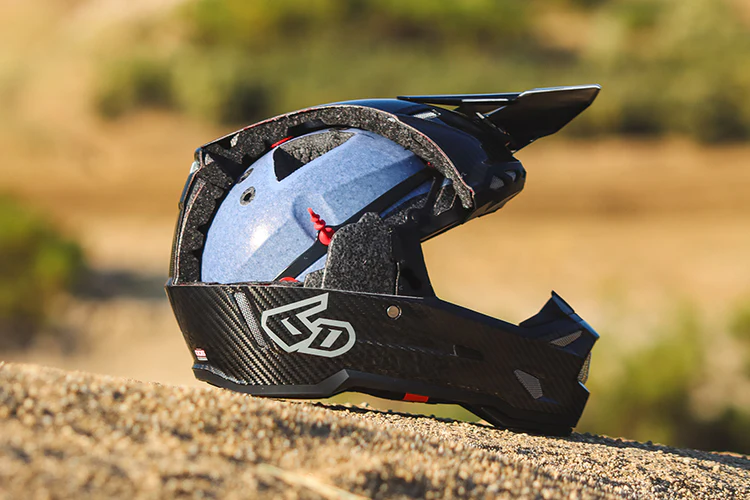
The Catch? It is still a premium-priced helmet, and while it is lighter than the ATR-2, it is not the featherweight champ of the dirt world. A medium tips the scales at about 2 pounds 14 ounces. Also, while it meets FIM standards for pro racing, it does not have the sticker because 6D wanted to keep the price from creeping up even more.
Silver Lining: The ATR-3 gives you serious tech where it matters, especially for the low-speed crashes and awkward falls that are a fact of life on the trail. It is slimmer, cooler, lighter, and flat-out better than before. If you are serious about keeping your head in the game, it is a helmet worth every penny.
Alternative Option: Bell’s Moto-10 Spherical offers a different, also highly advanced approach to rotational impact management (Spherical Technology powered by MIPS) at a similar premium level.
The ATR-3 stands out with its ODS impact protection, lightweight build, and excellent ventilation.
NOTE: This helmet is popular and often out of stock: so check all the colorways.
- ODS Impact absorption system
- Lightweight (under 3 lbs)
- Air-Gap ventilation system
- Drink tube compatible
- Rebuildable after crashes
- FIM safety rating (for off-road)
Our Review: The 6D helmets are seriously impressive, packing the kind of protection enduro riding demands. We’re looking forward to putting one through its paces on the trail for a proper long-term test.
Bell Moto-10 Spherical: Cutting-Edge Protection, Premium Feel
Bell threw everything they had into the Moto-10 Spherical, collaborating with MIPS to create their flagship off-road helmet. The core technology here is Spherical Technology™, which works like a ball-and-socket joint. An outer liner rotates around an inner liner during a crash, redirecting rotational impact forces away from the brain.

The Spherical Technology allows that crucial slip plane movement, aiming to reduce the forces that can cause serious injury. Bell pairs this with a segmented 3k carbon shell for strength and lightweight. The result is a helmet that feels incredibly secure and protective, meeting stringent ECE 22.06, DOT, and SNELL standards.
Ventilation is a major focus, with the Thermal Exchange Airflow System (T.E.A.S.) designed to suck in cool air and expel hot air efficiently, even during demanding, lower-speed enduro sections. The large eyeport provides excellent goggle fit and peripheral vision. Inside, the CoolJade liner feels premium and helps manage heat, and the Magnefusion™ emergency-release magnetic cheek pads are a clever touch for quick, safe removal. Bell also paid attention to details like the Flying Bridge Visor with side air intakes and a breakaway design.

The Catch? It sits at the very top of the price ladder. While ventilation is excellent, some riders might find ultra-ventilated helmets like the Klim F3/F5 even breezier at very low speeds.
Silver Lining: You get a state-of-the-art rotational impact system (Spherical/MIPS) in a beautifully crafted, lightweight carbon shell with premium features, excellent ventilation, and top-tier safety certifications. It’s pro-level gear for serious riders.
Alternative Option: The 6D ATR-3 brings their updated ODS tech and all the impact protection enduro riders expect, with the bonus of rebuildability after a crash. If you’re after a top-tier lid that takes safety seriously, it’s worth a hard look. Another high-end option is the Alpinestars Supertech M10, which combines advanced MIPS with a multi-composite shell for serious performance and comfort.
Bell’s most advanced dirt bike helmet, the Moto-10 Spherical, delivers top-tier impact protection, airflow, and pro-level comfort for serious riders.
- Spherical Mips® tech for superior safety
- Excellent ventilation system
- Comfortable, cooling liner with easy-to-remove cheek pads
- Expensive
- Slightly heavy
- Snug fit may need break-in
Our Review: The Moto-10 is Bell’s top dog for a reason. We’re eager to compare its Spherical tech against ODS. Stay tuned to It’s Better On The Road for updates.
Klim F3 Carbon Pro ECE Helmet: Lightweight Ventilation
When you’re hours into a grueling enduro, every ounce on your head feels like a pound. Klim understands this, and the F3 Carbon Pro is engineered to be incredibly lightweight while maximizing airflow, making it a favorite among riders who prioritize comfort and fatigue reduction during long, hot days.
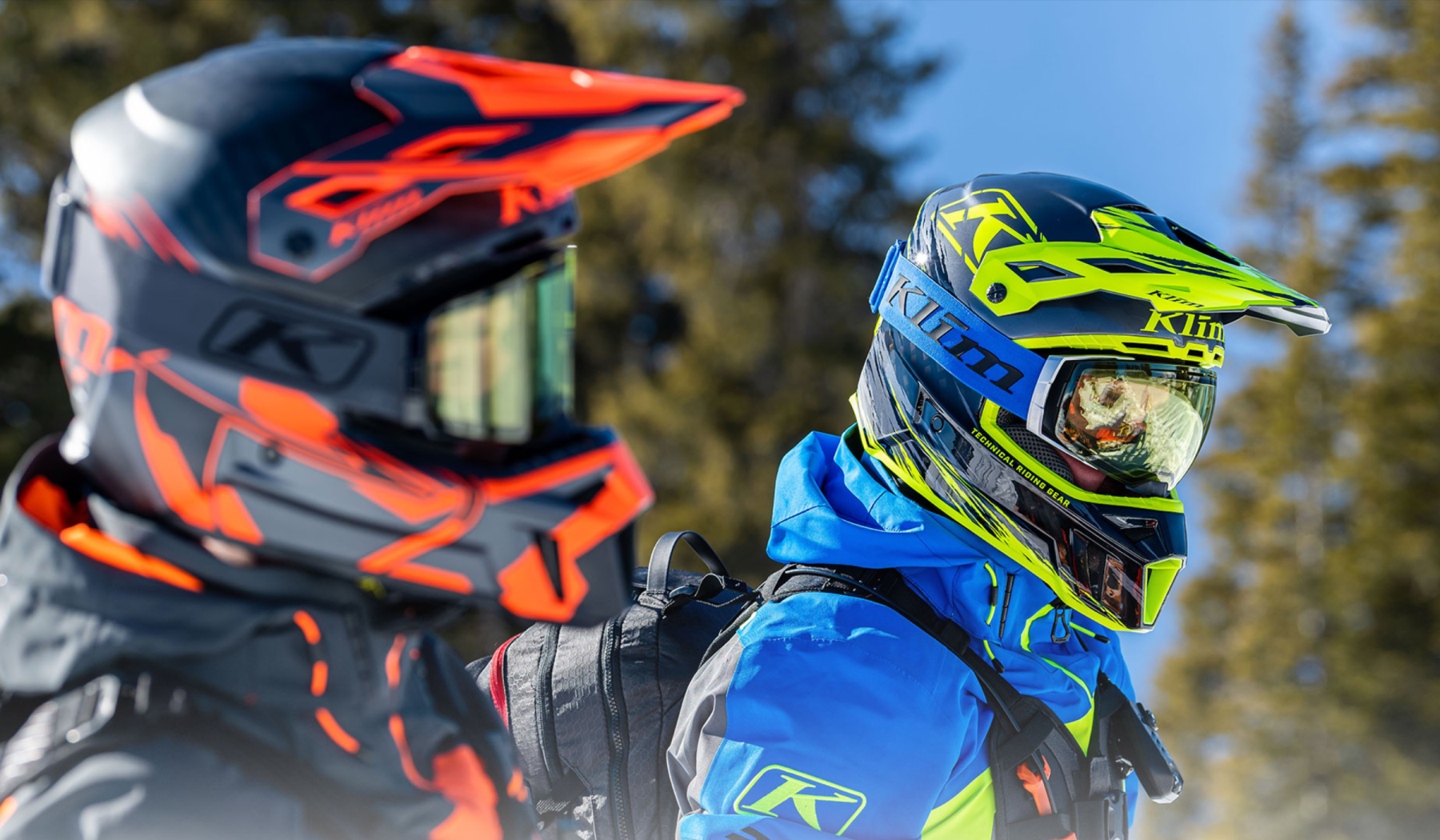
The first thing you notice is the weight, or rather, the lack of it. The hand-laid carbon fiber shell keeps the grams to an absolute minimum. This directly translates to less neck strain, allowing you to stay focused on picking lines through technical terrain rather than battling fatigue. It’s one of the lightest certified helmets available.
The F3 Carbon Pro is renowned for its ventilation. Klim designed the extensive network of intake and exhaust vents to work efficiently even at lower speeds encountered in tight singletrack. You can literally feel the air moving across your scalp, helping to keep you cool and reduce sweat buildup when you’re working hard. The interior padding is comfortable, moisture-wicking (using Klimatek™ fabric), and designed to complement the airflow. The latest “Pro ECE” version meets the ECE 22.06 standard, adding modern safety cred.
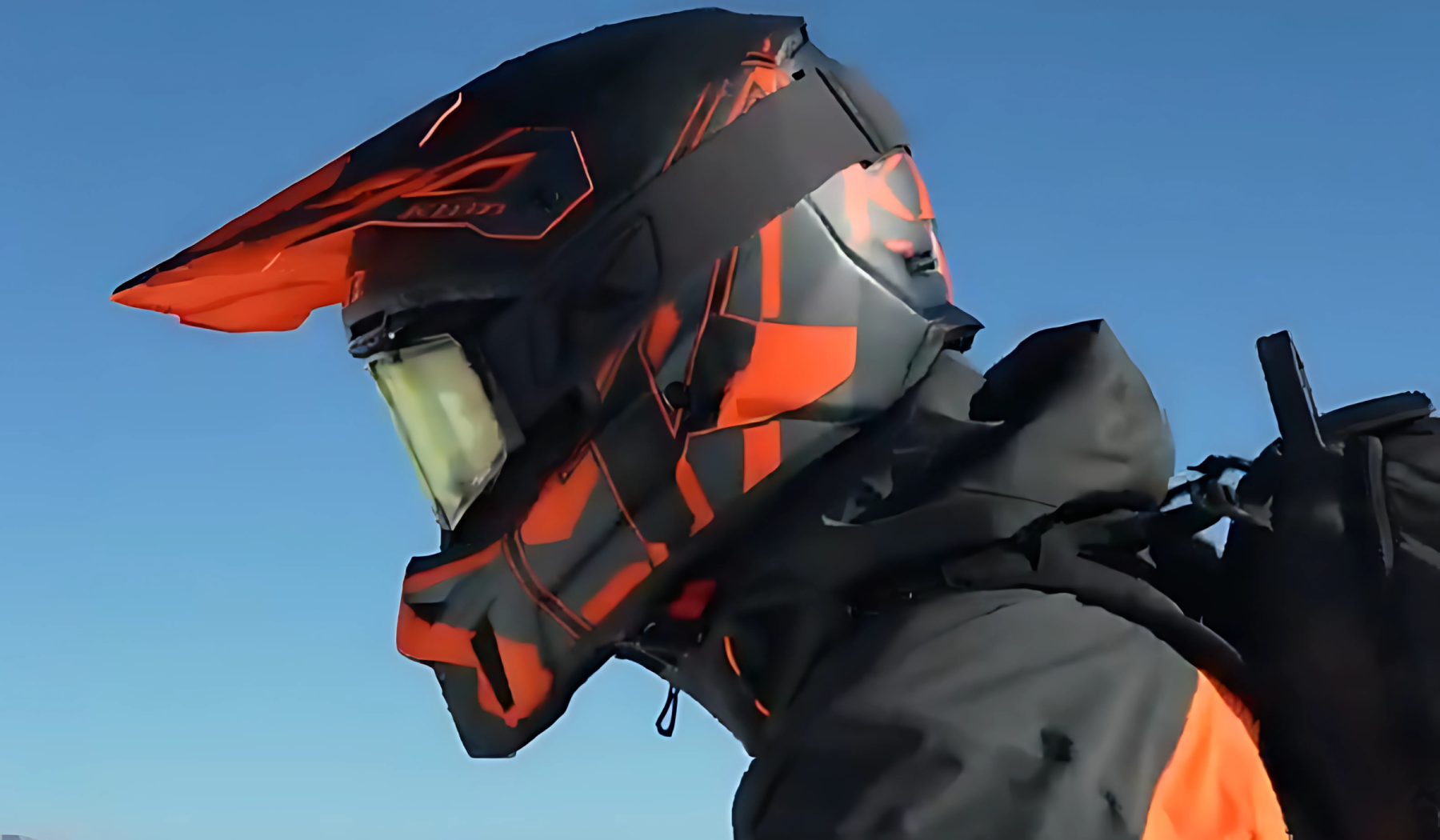
The Catch? While meeting ECE 22.06, it uses a more traditional EPS liner without the complex rotational systems of the 6D or Bell Moto-10 (though some versions may incorporate MIPS – check specific model). Its primary focus is weight and airflow, potentially sacrificing the absolute cutting edge in impact tech compared to the top-tier safety helmets. Can be noisy due to the high airflow.
Silver Lining: Offers an exceptional combination of ultra-low weight and class-leading ventilation, drastically reducing fatigue and improving comfort during demanding enduro rides, while still meeting rigorous safety standards.
Alternative Option: The Leatt Moto 9.5 Carbon is another lightweight carbon helmet, often bundled with goggles, featuring Leatt’s Turbine 360 rotational protection system.
The Klim F3 Carbon Pro Helmet delivers ultralight strength, cutting-edge impact protection, and all-day comfort for serious riders.
- Hand-laid carbon fiber shell and Koroyd® technology for superior lightweight impact protection
- High-efficiency ventilation system with 19 vents keeps you cool on long rides
- Fidlock® quick-release strap and antimicrobial liner enhance comfort and ease of use
- Premium features come at a higher price point compared to similar helmets
Our Review: Klim gear is built for demanding conditions, and the F3 Carbon Pro excels in heat and long rides. We’ll come with a full review in the future.
Leatt Moto 7.5 Helmet (with Goggles): Smart Safety & Value Bundle
Getting properly kitted out for enduro can be expensive. Leatt offers a compelling package with the Moto 7.5 helmet, which not only includes their Turbine 360° rotational impact protection system but often comes bundled with a pair of high-quality Leatt Velocity goggles – an awesome value proposition.

The Turbine 360° system uses small, energy-absorbing discs embedded in the EPS foam. These are designed to deform and rotate during an impact, reducing both direct impact forces and rotational acceleration transferred to the brain. It’s Leatt’s answer to MIPS and other rotational systems, offering advanced protection at a mid-range price point. The injected polymer shell keeps costs down while meeting DOT and ECE standards.
Ventilation is very good, with large channels designed to work effectively even at lower speeds. The Dri-Lex liner is comfortable, moisture-wicking, and washable. The eyeport is wide and designed for optimal goggle fit (especially their own). Having quality goggles included in the box saves you money and ensures perfect compatibility right away.
The Catch? The polymer shell makes it heavier than the premium carbon helmets. While the Turbine 360° tech is great, some might prefer the more established MIPS or the unique ODS/Spherical systems. The included goggles might not be everyone’s preferred model, though they are generally well-regarded.

Silver Lining: You get an advanced rotational impact protection system (Turbine 360°), good ventilation, comfortable liner, and a pair of quality goggles included, all at a very competitive mid-range price. Outstanding value for enduro riders.
Alternative Option: The Fox Racing V3 RS (mentioned below) offers MIPS Integra Split protection and premium features like a carbon composite shell at a higher price point but is seen as a strong value within the upper-mid tier.
The Leatt Moto 7.5 V24 Helmet Kit offers serious protection, comfort, and value—complete with 4.5 goggles included.
- Advanced 360° Turbine safety tech
- Cool, comfortable, and neck brace-friendly
- Great bundle value
- Heavier than carbon fiber helmets
Our Review: The Leatt 7.5 is a smart pick for riders looking for both safety and value. We plan to put it to the test soon.
Fox Racing V3 RS Helmet: Feature-Packed Performance
Fox Racing has long been a major player in off-road gear, and the V3 RS helmet packs many of their top technologies into a package that offers excellent performance for the price, making it a favorite for serious amateurs and weekend warriors.

Safety is a key focus, featuring the MIPS® Integra Split impact protection system. This integrates the low-friction layer between two layers of Varizorb™ dual-density EPS foam, designed to manage rotational forces effectively. The shell itself is a Multi Composite Technology (MCT) construction blending carbon and FRP resins for light weight and strength. It also includes features like emergency release cheek pads and a carbon fiber D-ring fastener.
Ventilation is strong, with multiple intake and exhaust vents designed for high airflow. The Ionic+® moisture-wicking liner helps keep you comfortable and fights odor. One standout feature is the Magnetic Visor Release System (MVRS™). The visor is held on by magnets, designed to detach easily in a crash to potentially reduce snagging and rotational forces, but stay put during normal riding, a clever safety and convenience feature. The eyeport is large and accommodates modern goggles well.
The Catch? While featuring advanced MIPS, it doesn’t have the unique ODS or Spherical systems of the absolute top-tier helmets. Price is upper-mid range, more than budget options. Some riders have mixed opinions on the MVRS visor’s security in heavy roost or branch hits compared to traditional screws (though generally well-liked).
Silver Lining: Delivers a lightweight composite shell, advanced MIPS Integra Split protection, excellent ventilation, premium liner materials, and the innovative MVRS visor system, offering pro-level features at a price below the absolute top flagships.
Alternative Option: The Shoei VFX-EVO delivers that classic Shoei quality with a focus on comfort, durability, and solid ventilation, key for long, demanding enduro rides.
Premium pro-level helmet with carbon fiber strength and race-ready features.
- Ultra-light 4K carbon shell with Mips® safety system
- Hydration routing and speaker-ready design
- Comes with spare parts for a custom fit
- Lacks the comfort and ventilation of higher end enduro helmets
Our Review: The Fox V3 RS blends tech and performance well. We’re putting it through its paces and will come back with a thorough review soon.
Comparison Table
| Feature | 6D ATR-3 | Bell Moto-10 Spherical | Klim F3 Carbon Pro ECE | Leatt Moto 7.5 (+Goggles) | Fox V3 RS |
| Key Safety Tech | ODS | Spherical (MIPS) | EPS (MIPS Optional) | Turbine 360° | MIPS Integra Split |
| Shell Material | Carbon Fiber/Composite | 3k Carbon | Carbon Fiber | Injected Polymer | MCT (Carbon/FRP) |
| Rebuildable? | Yes | No | No | No | No |
| Approx. Weight | Medium-Heavy (~3 lbs) | Medium (~3.3 lbs) | Very Light (~2.6 lbs) | Medium-Heavy (~2.86 lbs) | Light (~2.6 lbs) |
| Ventilation Focus | High Airflow | T.E.A.S. High Airflow | Max Airflow (Low Speed) | High Airflow (Low Speed) | High Airflow |
| Price Range | $$$$(Premium) $$ | $$ (Premium) $$ | $ (Upper Mid-Range) | $$ (Budget-Mid) $$ | $ (Upper Mid-Range) |
| Get One | Check Price | Check Price | Check Price | Check Price | Check Price |
Note: Weights are approximate and vary significantly by size/spec. Price ranges are relative.

Buying Guide: Choosing Your Enduro Helmet
Picking the right enduro helmet isn’t like buying a street lid. Here’s what to prioritize:
- Rotational Impact Protection (CRITICAL): Enduro crashes often involve tumbling and twisting forces. Look for advanced systems designed to manage this like MIPS, 6D’s ODS, Bell’s Spherical, and Leatt’s Turbine 360°. More on each below.
- Ventilation (Sweat Management): Enduro = Hard work + heat. You need MASSIVE airflow, especially vents designed to work at lower speeds found in technical terrain. Look for large intake ports, deep internal channels, and effective exhaust vents. Testimonials highlight which helmets truly excel here (Klim F3/F5, Leatt).
- Weight & Balance: Lighter reduces fatigue over long rides. Carbon fiber helps, but check total weights. Balance is also key, a well-balanced helmet feels lighter. Try it on if possible.
- Goggle Compatibility: The eyeport needs to be large enough to accommodate your preferred goggles without restricting vision and allow a good seal to keep dust out. Some helmets are designed around specific goggle brands/shapes.
- Safety Certifications: DOT is the minimum US standard. ECE 22.06 is the newer, more rigorous European standard becoming widely adopted, look for it. SNELL adds another layer of impact testing relevant to some off-road scenarios. FIM is primarily for high-level racing.
- Fit & Liner: Must be snug and secure, no movement. Cheek pads should be firm initially (they break in). Liner needs to be comfortable, highly moisture-wicking, antimicrobial, and easily removable/washable (it will get disgusting).
- Chin Bar & Visor: Ensure a strong, protective chin bar. Look for visors designed to break away in a crash (like Fox MVRS or those using plastic screws) to potentially reduce snagging/rotation.
- The Single Impact Rule & Rebuildability: Remember, certified helmets are designed for ONE significant impact. After that, the protective EPS foam is compromised. If you crash often (and who doesn’t in enduro?), the unique rebuildable design of the 6D ATR-2 can offer significant long-term value and peace of mind, saving you from buying a whole new helmet after every hard hit.
Rotational Impact Protection Systems:
- MIPS: The most common system, a low-friction layer allowing slight movement between shell and liner. Comes in various integrations (Standard, Integra, etc.).
- 6D ODS: The helmet-within-helmet suspension system, excellent at low-threshold and rotational impacts.
- Bell Spherical: Ball-and-socket design powered by MIPS.
- Leatt Turbine 360°: Energy-absorbing discs providing rotational damping.
Choosing an enduro helmet means prioritizing protection against the specific risks of off-road riding, managing heat and fatigue with ventilation and low weight, and ensuring clear vision through your goggles. Invest wisely.
Ride hard, stay safe!
Related

Best Quietest Modular Motorcycle Helmets: Tune Out the Wind, Not the Ride
Discover the quietest modular helmets that turn wind roar into a whisper. Protect your hearing and arrive fresh on every ride.


